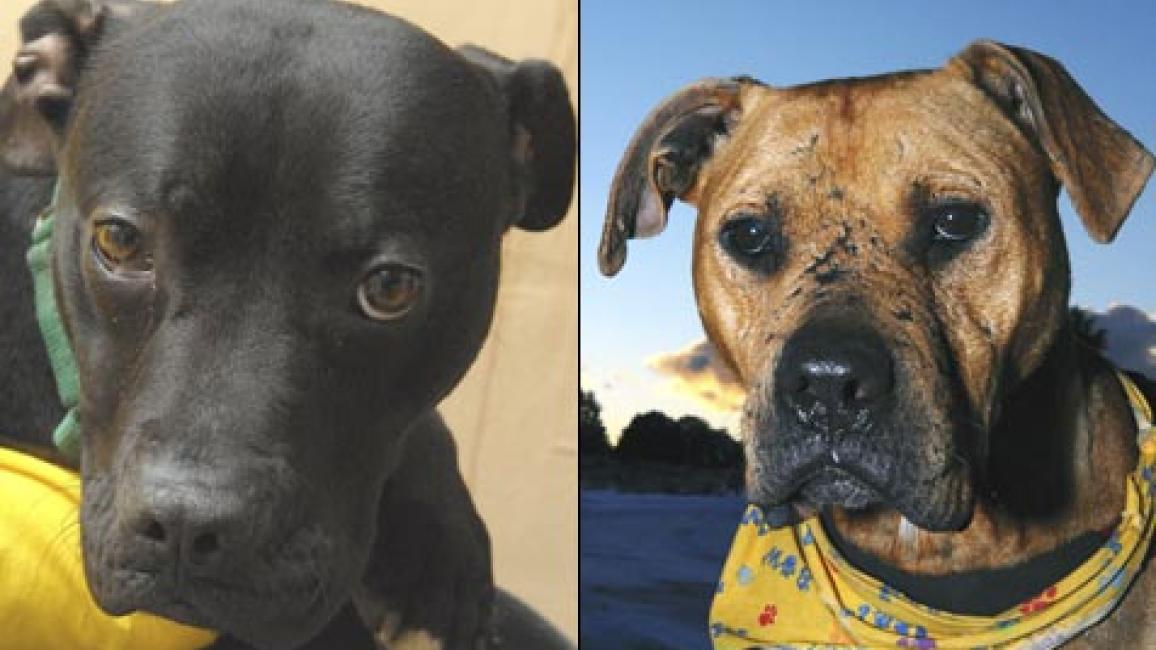Michael Vick dog fighting case review conference

When Michael Vick appeared in court to face dog-fighting charges last year, 53 media vans were parked outside the federal courthouse in Virginia. When the Queen of England visited the area, there were about half that many.
Media coverage was just one aspect of the case that lawyers, animal welfare advocates and academics examined during a day-long conference in Chicago last week.
Michael Vick case review conference
Best Friends co-founder Francis Battista was among the speakers for "The Michael Vick Case and Its Impact on Cruelty Cases."
Other presenters included Brian Whisler, of the U.S. Attorney’s office; Claire Caldwell, a Vick defense attorney; ASPCA forensic veterinarian Melinda Merck; and law professor Rebecca Huss, the dogs’ court-appointed guardian.
The conference, sponsored by the American Bar Association, performed a post-mortem on the case, examining how well or how poorly the legal system and the animal welfare community fared while bringing Vick to justice.
The Vicktory dogs
Battista had 22 success stories to brag about – the "Vicktory" dogs living, loving and thriving at Best Friends, including Cherry, one of the pit bull dogs many have come to know through the National Geographic Channel’s "DogTown" series.
He also spoke about how the case and Best Friends’ success with the dogs should change the way people perceive the problem. Battista said, "This case brought dog fighting to the surface, where it can no longer hide from the public. And one of the most important lessons learned from this is the need to change our narrative from ‘fighting dogs’ to ‘people who fight the dogs.’"
(Click here for more information about pit bulls and the Vicktory Dogs.)
Some animal welfare organizations had suggested that the dogs be euthanized because they were beyond rehabilitation, that their aggression was too profound to overcome.
"That these dogs may have been killed is unthinkable," Battista said. "Most of them are dog-friendly and certainly interact well with people. Lucas, the grand champion, is one of the biggest cupcakes of them all."
Corroboration evidence from the Vick case
The conference also emphasized the importance of forensic evidence. Prosecutor Whisler recruited Merck, the ASPCA vet, to help build his case. Key evidence against Vick included her findings from examining wounds of a dozen dogs found buried in his backyard.
It prompted defense attorney Caldwell to try to cut her client’s losses by recommending a plea. "[Merck’s] photos from the crime scene," Caldwell said, "did my client in. There’s nothing more powerful than corroboration evidence of dead bodies."
Huss, whom the judge appointed to represent the dogs’ interests in the case, said one of Vick’s biggest mistakes was not operating alone, thereby allowing prosecutors to charge him with conspiracy, a felony. "If you’re going to do something bad, you’d better do it by yourself, because a conspiracy charge will add years to your sentence," she said.
Nearly all the presenters at the conference mentioned the media as a sometimes frustrating but ultimately positive force. Caldwell said reporters routinely barged right by her receptionist into her office for "any quote." Huss said her phone started ringing an hour after accepting the role as guardian.
On the other hand, the media kept the Vick case in the forefront of public consciousness. Whisler estimated that the case generated 474,000 Google hits.
While Vick’s punishment ranks as a win for animal welfare, several issues require further examination, according to conference participants. For instance, Huss decried the length of time the dogs spent in shelters awaiting the outcome of the case. She said, "These dogs were already traumatized, so living in a shelter all that time only added to their general anxiety and fear. I wish I had been called in earlier."
Who pays for care of former fighting dogs?
The Vick case hinted at another problem, one that carries more impact in typical dog-fighting cases. As part of his sentence, Vick, who earned tens of millions of dollars playing football and endorsing a litany of products, was required to pay $938,000 for lifetime care for the dogs.
It’s unlikely that typical dog-fighters could afford even a fraction of that.
Wisconsin attorney Leslie A. Hamilton said the financial responsibility then falls on shelters that care for the animals. "We helped break up a dog-fighting ring before anyone even heard of Michael Vick, and the shelter that took those dogs in almost went bankrupt."
Another conference participant, Lynne Huntley from Chicago’s South Suburban Humane Society, said that whenever she takes in dogs from dog-fighting cases, it not only puts a strain on the organization financially, it also means giving up space for other displaced dogs.
ASPCA’s Merck offered a couple of alternatives. "Get to the media," she said. "They’ll help spread the word and encourage the public to get involved. And make relationships with trainers used to dealing with animal abuse. Line up those relationships ahead of time. They’ll get free media attention for their efforts."
Read more about the rescued Michael Vick dogs.
Photos of Cherry (left) and Lucas (right) by Gary Kalpakoff